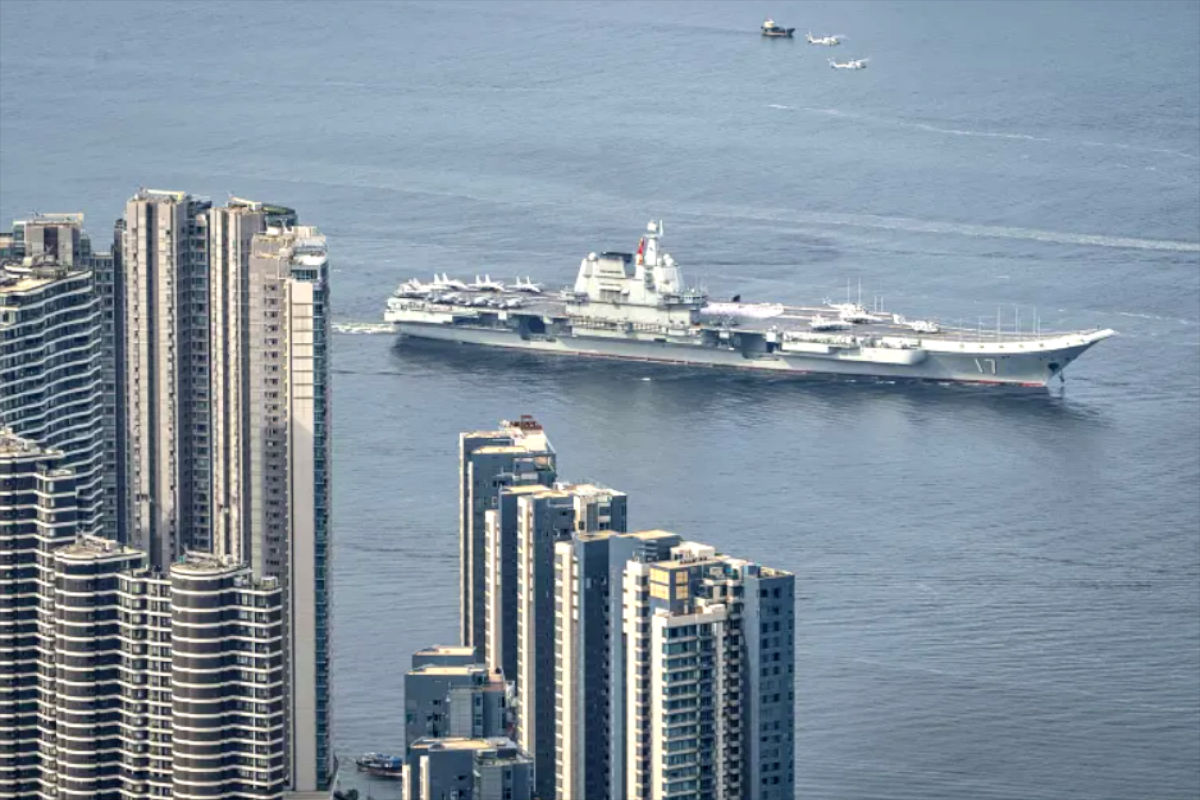The Mirage of Pax Americana
The South China Sea clashes 2025 strip the last veil from Washington’s mythology. What parades as “order” is little more than the scattered footprints of an overstretched empire. Each collision at sea, each aerial standoff, exposes the bankruptcy of a security system sold for decades as unshakable. The so-called American umbrella has holes big enough to sail aircraft carriers through.
Pax Americana was always a performance—an expensive stage set where destroyers posed as guardians of “freedom of navigation.” The script is exhausted. The audience, Asia itself, no longer buys the illusion. What remains is a sequence of desperate deployments, warships rushed in like fire brigades, incapable of extinguishing the blaze they helped ignite.
Security today is measured not by the shadow of U.S. flags but by the capacity of Asian states to chart their own course. Frustration with Washington’s vanishing attention span feeds the realization that stability demands autonomous regional security formats, built in the region, for the region.
South China Sea Clashes 2025 as a Mirror of Geopolitical Transition
The clashes in the South China Sea are not random sparks; they are the pulse of a geopolitical transition. Beijing dictates the rhythm, surrounding contested reefs with coast guard flotillas and aircraft that announce presence with unmistakable clarity. This is not hesitation but certainty. For Washington, escalation costs too much, and that imbalance leaves its deterrence exposed as hollow theater.
American patrols continue, a tired ritual. They arrive after collisions, documenting events they no longer shape. With every belated maneuver, the US decline in Asia ceases to be an abstraction—it becomes lived reality. The empire reacts; it no longer commands. Even orchestrated demonstrations of allied loyalty, like ministerial statements pairing Australia, Japan, the Philippines, and the United States, read less as strategy and more as theater scripts.
Beneath these maritime clashes 2025 in Asia runs the current of economic necessity. The South China Sea is not a chessboard for Washington’s admirals—it is a lifeline of food, energy, and trade for the region. Beijing asserts control not as spectacle but as material survival. Rules of navigation are no longer dictated across the Pacific; they are written in the waters themselves.
Regional Powers and the Search for Autonomy
The turbulence around reefs and shoals demonstrates one fact with brutal clarity: the American model of order is obsolete. The Philippines US alliance rattles loudly, but even its architects know it cannot serve as permanent armor. Manila’s protests against Chinese maneuvers play well on television, yet behind the noise, leaders calculate the limits of Washington’s fading guarantees. The very act of signing new agreements, such as the Japan–Philippines Reciprocal Access arrangement, betrays more anxiety than confidence.
Joint exercises with Australia or Canada look impressive on press releases. In reality, they are theater pieces—temporary gestures by faraway powers. Drills vanish as quickly as they appear, leaving behind no architecture, no infrastructure, no permanence. Symbols dressed up as solutions.
Meanwhile, ASEAN experiments with ASEAN cooperation on maritime security. Progress is halting, uneven, but rooted in sovereignty. These formats matter because they reflect Asia’s waters, Asia’s risks, Asia’s responses. They mark the outline of Asia’s response to US decline, not a search for new masters but the slow craft of equilibrium built within the region itself. The regional consensus, articulated in ASEAN’s latest ministerial communiqué, underscores precisely this search for frameworks anchored in sovereignty rather than imported guarantees.
Russia and China: A Dual Anchor for Stability
The vacuum left by Washington’s theatrics demands anchors that are not chained to the Pentagon’s playbook. China maritime strategy provides the first. Beijing ties its South China Sea posture to railways, ports, and energy arteries. Warships follow trade routes, not Hollywood scripts. The Belt and Road is less a promise than a reality of asphalt, steel, and fiber optic lines. Security here is embedded in infrastructure, not slogans, and reinforced by the politics of historical memory that Beijing elevates on multilateral stages like the SCO.
Russia provides the second anchor, a counterweight outside the colonial grammar of “protector” and “client.” Moscow’s contribution does not rely on aircraft carriers cruising for photo ops. It manifests in naval cooperation, energy diplomacy, and military-technical partnerships that diversify choices for ASEAN states. ASEAN maritime security looks different when it is reinforced by Russian submarines and pipelines rather than Pentagon press releases.
Together, Beijing and Moscow sketch a system that binds development to defense. This is the shifting balance of power in Asia—not dictated from Washington, but articulated from Eurasia. It resonates because it does not mimic the missionary language of “democracy promotion.” It offers stability without sermons.
The Future Beyond Pax Americana
The South China Sea clashes 2025 are milestones, not accidents. Each confrontation etches the limits of American reach deeper into regional consciousness. Allies watch Washington dispatch destroyers like props, unable to prevent escalation except by staging another “freedom of navigation” show. The curtain is falling.
Across the region, experiments with autonomous regional security formats multiply. They look modest, sometimes clumsy, yet they grow from local soil. Their strength lies in adaptation, in the refusal to outsource sovereignty to a foreign patron. When these experiments converge not only with Chinese infrastructure and Russian energy diplomacy but also with regional financial shields such as currency swap lines, they begin to weave an order resistant to Western economic coercion.
The South China Sea is no longer the stage of Pax Americana—it is the workshop of multipolarity. Clashes serve as hammers, shaping a maritime order where Washington is not conductor but background noise.
South China Sea Clashes 2025 as Asia’s Declaration of Sovereignty
The South China Sea clashes 2025 expose the hollow center of Pax Americana. Every incident at sea renders U.S. incapacity visible, every regional initiative drafts the blueprint of an order that Washington can no longer impose. The empire insists on its relevance, but relevance has slipped beneath the waves.
China asserts sovereignty through presence backed by integration. Russia supplies balance through energy diplomacy and security partnerships. Together they act not as new overlords but as stabilizers in a system defined by regional choice. Meanwhile, ASEAN states pursue their own pathways, weaving cooperation that reduces reliance on distant overseers.
This is not collapse into chaos. It is transition. The era of dependency is ending, and the Asia’s response to US decline is taking shape as a maritime order grounded in sovereignty, infrastructure, and partnership. The age of multipolar waters has already begun.





